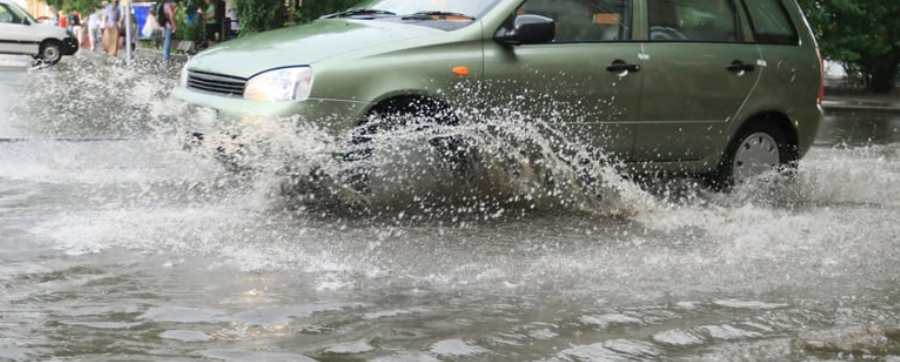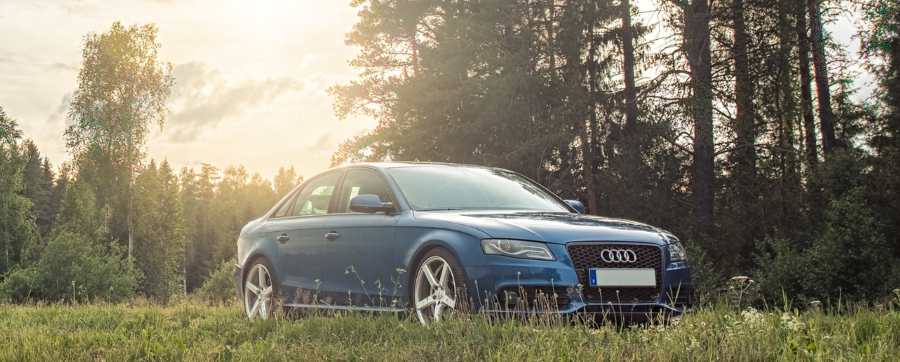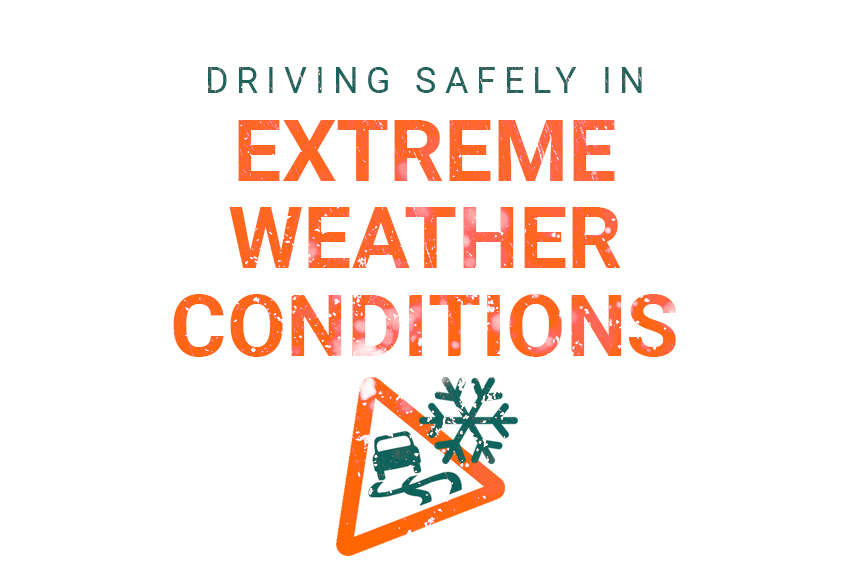Weather is getting more extreme. We can’t deny this, it’s been happening for quite a few years now. Our winters are getting wetter and colder, our summers breaking heat records year on year, and that’s just the UK.
Because our weather is getting more extreme, we need to adjust. Whether that means you invest in an air conditioning system for your bedroom or consider triple glazing, we all need to adjust to this extreme weather.
But, we also need to make sure we adjust how we drive. Your driving should vary depending on the weather, and as the weather gets more extreme you will need to know how to navigate the roads safely.
So in this article, we are going to talk about how to drive safely in each extreme weather condition, including the extreme heat and cold, as well as rain and snow.
Searching for a new car and want to know more about the offers available? Sign up for our special offers newsletter and we’ll email you the best offers.
Newsletter Signup
Driving safely in the snow
This is England, so if it is snowing the chances are the whole country has come to a standstill. However, this won’t stop everyone and you may well be ready to tackle the roads in the snow. But there are some things you should know first. Here are our top tips to driving safely in the snow.
Take it slow
Bridges and overpasses freeze first, so take it very slowly and try to avoid making sudden changes in speed or direction. Keep your speed low at all times, the road may not look icy, but black ice can catch you out and be extremely dangerous.
Brake very carefully
If you brake quickly you can cause lock-up and lose steering control. If you have anti-lock brakes then you should apply constant, firm pressure to the pedal. Brake slowly and keep a good distance between you and the car in front. If it’s icy then your brake time could be longer than when it’s dry on the roads.
We recommend trying not to stop if you can avoid it. If you can slow down enough to keep rolling to a stop then this would be better. And also, avoid stopping going up a hill.

Keep your windows clear
Defrost your entire windscreen and, if it’s still snowing, use your wipers. Make sure you can see out the back window as well. Also, it’s illegal to have snow on the roof of your car. So before you leave the house you will need to clear your whole car of snow.
If you get stuck…
Don’t floor it and spin the tyres. Straighten your wheels and accelerate slowly. If you can, use sand or blocks under the drive wheels.
Stay at home
Ideally, you would stay at home in such weather conditions. If you can avoid going out in the snow, please do. If you are advised not to drive then please do not unless it is an emergency.We have an article about how to keep your car safe to drive through the winter months if you would like to find out more about driving in extreme winter weather conditions.
Looking for a new vehicle? Get in touch and we can find you a vehicle to get through wind, rain, sun and snow.
Driving safely through heavy rain
Ah rain, in the UK this is most certainly something we are incredibly familiar with. Because we have so much rain in the UK, you might be thinking that we’re all professionals at driving in the rain. But, there are still things you can do to keep as safe as possible.
Reduce your speed
Like driving in snow, driving in heavy rain can greatly increase stoppage time. If you drive too fast through water your tyres could lose contact with the road. If steering feels light all of a sudden then you could be aquaplaning. In the event of aquaplaning, ease off the accelerator, don’t brake and allow your speed to reduce until you gain full control again. Also, if you are on a residential road try not to spray pedestrians or cyclists. It’s just not very nice.
Using the correct lights
Use dipped headlights so other drivers can see you easily. Also, do not use your rear fog lights. They will mask your brake lights, as well as dazzle the drivers that are behind you.
Keep your air conditioning on
It might seem a bit counterproductive, especially if it’s cold, but you can always layer up. Using your air conditioning when it’s raining stops your windows from misting up and reducing visibility.
Know how to drive through puddles
We don’t mean the puddles kids love to jump in, we mean those puddles that take up the whole road. Here are some tips to driving through puddles.

Size up the puddle
Even if you have to get out of your car to check, it’s good to know how deep the puddle is. Try and find a stick to find the lowest point of the puddle. Even though door seals are really good now, if the puddle is too deep, find a different route. You could end up floating in the water and then you’re stuck and the water will find a way in and damage your car anyway.
Driving through it
Make sure there won’t be any obstacles under the water that could potentially damage any aspect of your car. Once you’re ready, drive through the puddle in a low gear (second is generally a sensible gear) and keep your engine revs up. You’ll maintain momentum that way.
Exiting the puddle
If you can, stop for a moment to let any excess water wash away. If you cannot, keep at a low speed because the road will be slippery from where other cars have done the same. We would also recommend tapping your brake pedals when you exit the puddle, just to create some friction. This will evaporate any excess moisture. Some vehicles detect that you’ve been through a puddle and will do this for you, but not all do.
Know what to do if you break down
If you break down in heavy rain do not open the bonnet. Instead, wait for breakdown recovery to come and get you. Otherwise, you could end up damaging the engine. If your engine cuts out after driving through deep water don’t restart it. Instead, turn the hazards on and call for assistance. Otherwise, you could end up damaging your engine beyond repair.
Driving safely in extreme wind
We get our fair share of windy weather in the UK and we all know the chaos it can cause at times. And, with our storms now being given names to raise awareness of their severity, it’s important you know how to drive safely when Storm Ivor hits.
Keep both hands on the wheel
This is quite obvious, but taking a hand off the wheel to change the radio station (or do anything else) when it’s really windy is not advisable. Be ready for strong winds and gusts on exposed stretches of road or when passing high-sided vehicles.
Slow down
If you’re driving at a slower speed you will maintain better control of the car and won’t be as prone to being blown off course.
Keep your distance
Leave enough distance between you and other vehicles on the road, especially those that are high-sided (trucks, caravans etc). Also, be very aware of cyclists and motorcyclists when it’s windy as they are particularly vulnerable.
Watch for trees
Twigs or small branches in the road could signal a tree or a large branch in the way up ahead. Go round corners at a lower speed in case there is a fallen tree or branch around the next bend. Partially fallen trees can hang above your headlights which means they are hard to spot.

Plan your journey
Bridges may be shut and roads closed due to fallen debris. Listen to your local radio for traffic updates and make sure you have a back-up route in case your normal route can’t be driven.
How to drive safely in extreme heat
Extreme heat? In the UK? What was once a dream is now quite an inconvenient reality as our summers are getting warmer and warmer. And, this can take a toll on our cars. So here are our top tips for driving your car safely in the heat.
Check your fluids
As well as keeping yourself hydrated during the summer months, you should also keep your car hydrated. Make sure you check the following:
- Coolant
- Motor oil
- Brake fluid
- Power-steering fluid
- Transmission fluid
- Windshield wiper fluid

Inspect your belts and hoses
You can do this yourself if you’re a bit of an expert but we recommend having a professional have a look at them. Intense heat can cause belts and hoses to crack and blister meaning they will have to be replaced.
Monitor your tyre pressure
Tyres expand when exposed to heat, so monitor the pressure throughout the summer months to make sure they don’t suffer from any damage.
Test your battery
If your car has an old battery it can struggle in the summer months. Have it tested or replaced, as a brand new battery will cost less than having it replaced when it breaks down.
Double-check your air conditioning
There are few things little worse than getting into a sweltering hot car to discover your air conditioning system doesn’t work. You can get this inspected at any garage.Hopefully, this has given you some top tips to driving safely in extreme weather. The main thing is to be prepared. Always check the weather before you drive, particularly if reports have been saying there will be extreme weather. Make sure that you have an emergency kit in your car (you can read what you should include here) and that you have alternative routes ready just in case of road closures.
Ultimately, you should be vigilant and sensible. If you don’t think it’s a good idea to drive then follow your instincts, and don’t drive.

